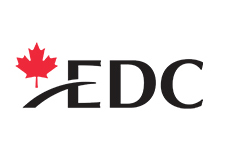After you have run your three channel tests, it’s time to look at these results.
Which channel tactic worked best? Where did you see the most customer uptake, such as a Facebook ad click, newsletter sign-ups or event attendees? Look at the data the tests generated and review your key points. What was the cost per user acquisition in each channel? If you were to scale the campaign, could you reach the number of customers you need to achieve your growth goal? Have you been successfully connecting with your target market?
Compare the results of each test against each other. Was there one test that outperformed the others? Or did none of the tests do very well?
If one test outperformed the others, this will be the channel you now need to focus on. More on that in a minute.
If NONE of the tests showed good results, that’s ok. It happens. You’ll need to run through this framework again so you can come up with new channels and tactics to test. Go back to Step 2 and run the brainstorming session. Use what you learned from this round about your customers and your messaging to inform your next round. If you go through the process a few times and are still finding no promising marketing strategy, you may need to consider whether you might need to pivot in order to get better traction with customers.
If you did have one test that outperformed the others, you are ready to continue with the rest of this step. There’s a simple, but critical action you now need to take: you need to drop the other two channels.
For many people, this is easier said than done. The temptation can be strong to carry on with the other two channels, as they may still be generating ok results. But continuing with two or three at this stage is a mistake.
It’s time to focus now on ONLY ONE CHANNEL—the one that gave you the best results. The reason you need to drop the other two is that you need to put all your marketing time and budget into your best channel. Don’t distract your team and dilute your budget by keeping less successful campaigns alive.
You now need to double-down on your focus channel and find the very best strategy for your business within that one channel.
To do this, you’ll need to run a process similar to the one you just ran to test your top three channels—only this time you’ll be testing three different tactics within your focus channel.
Think about what campaigns might work best in that channel and pick the top three. For example, if your focus channel is social, you could now test one campaign on Facebook, one on Twitter and one on YouTube. Design short, lean tests where you can measure the same five key points as before.
Run the tests for no more than a month with a budget of no more than $1,000. Some tests, such as for social tactics, will need less than a month.
At the end of the test period, take a look at what platforms and tactics worked best and what didn’t. You can now optimize your campaigns based on your most successful tactic. Maybe you’ve learned you should concentrate on YouTube. Use A/B testing to further zero in on what resonates best with customers. For example, you can use the two groups (A and B) to try different keywords to see what gets more views for your video, or use different background music and compare the results.
Lastly, we all know that over time platforms evolve, costs increase and channels become saturated. Customer growth goals change. The factors that made your current marketing tactic effective will not remain static. Because you have to work with an ever-changing marketing landscape, you need to continually run small tests to keep your campaigns optimized. Keep collecting and measuring as much data as you can. Watch what the metrics tell you. When you see your ROI start to flatline or decrease or when you need to reach a new growth goal, it’s time to think about starting this framework over again.
This takes us to Step 5, our final step.
To recap:
- After running your 3 channel tests, identify which one did the best. (If you had no clear winner, go back to Step 2.)
- Keep the strongest channel & drop the other two. Do not spend more time or money on the two weaker channels.
- Double-down within your focus channel. Within it, run 3 tests (<1 month, <$1,000) to experiment with different tactics. Use these results to identify your best marketing tactic.
- Conduct ongoing A/B tests on this marketing tactic to optimize it.
In time, as factors such as costs change, your ROI will flatline or decrease. Your growth goal will also change. When either of these occur, it’s time to move to Step 5.

